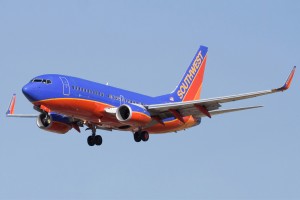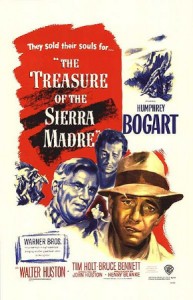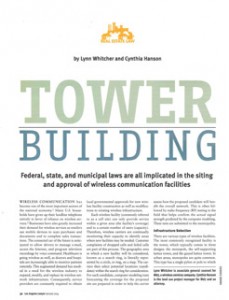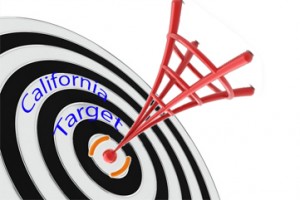Discovery Channel premiers tonight a special on tower climbers who build and maintain communications/cell towers.
From the preview trailer, this looks to be a scary look at the business. Frankly, there’s no other way to look at the business.
 I really love flying Southwest Airlines, especially after flying UAL for over 800,000 lifetime miles. I’ll never make Million Miler status on UAL because of…well, if you fly UAL you know the rest of that sentence.
I really love flying Southwest Airlines, especially after flying UAL for over 800,000 lifetime miles. I’ll never make Million Miler status on UAL because of…well, if you fly UAL you know the rest of that sentence.
Southwest is simply far less of a hassle, even when they screw up. And they have a sense of humor. That’s one of the reasons I record the safety announcements on virtually every flight.
Every so often you’ll hear a gem like the one here, which I recorded on a flight back to L.A. from a meeting in Denver.
The latest major scientific report to address the issue of cellular communications from cancer comes from England. There, the Mobile Telecommunications and Health Research Programme (“MTHR Programme”) released a report prepared for the Department of Health discussing its 11 years of research regarding whether cellular communications radio frequency emissions impact public health.
The report’s basic finding is that there was no link between cellular communications (from base stations or handsets) and adverse health effects in humans such as cancer.
The science underpinning the reported results is impressive. Some 60 peer-reviewed papers have been generated by this study funded through the MTHR Programme.
Quoting from the report:
Over a period of 11 years, the MTHR Programme has supported 31 individual research projects that between them have resulted in almost 60 papers in peer-reviewed scientific journals. All but one of the research projects is now complete, and the Department of Health has decided that this is an opportune time to bring research on mobile phones and health into its mainstream research portfolio.
. . .
In this report we discuss the work we supported to investigate whether maternal exposure to base station emissions during pregnancy could affect the risk of developing cancer in early childhood. A second project investigated the risk of leukaemia in relation to mobile phone use. Neither of the studies identified any association between exposure and an increased risk of developing cancer. These findings appear to be consistent with the results from other recent studies examining similar endpoints.
Of particular interest is that the MTHR Programme studied whether signal modulation produced any different study results compared to an unmodulated carrier wave (“CW”).
A key question in this area is whether the modulations applied to radio signals to enable them to carry voice and data communications can elicit specific effects that are different from those of the carrier frequency alone. We supported three projects to examine this issue in different ways, including one that tested whether a wide range of cells and tissues could demodulate the signal. None of the projects found any evidence that modulated signals produced different effects from the carrier frequency. When taken together with the findings from the provocation studies we supported, which also compared modulated signals with carrier frequencies, we believe that these results constitute a substantial body of evidence that modulation does not play a significant role in the interaction of radiofrequency fields with biological systems. This conclusion has extremely important implications and should facilitate the pooling of data from different studies and allow conclusions to be drawn with greater confidence.
Not surprisingly, the report concludes that further research should be conducted, and establishes five priority areas for that future research:
a Studies of long-term behavioral/neurological outcomes in children and/or adolescents in relation to mobile phone usage,
b provocation studies on children,
c provocation studies to identify neurobiological mechanisms underlying possible effect of mobile phone signals on brain function, including sleep and/or resting EEG,
d studies in suitable animal models of the effects of early-life and prenatal exposure on development and behaviour,
e studies in suitable animal models of effects on ageing and neurodegenerative diseases.
(The spelling above is that used in the report, which is written in British English.)
If you would like to read the MTHR 2012 report and/or the prior MTHR 2007 report, I’ll be happy to send them to you automatically via email when you fill the appropriate form(s) below.
PLEASE FILL OUT ONLY ONE FORM AT A TIME. Then you can fill out the other form if you’d like.
For a copy of the MTHR 2012 report, please fill in the form just below. The 2012 report will be emailed to you as soon as you press SEND.
If you would like a copy of the MTHR 2007 report, please fill in the information below. It will be emailed to you as soon as you press SEND.
-Jonathan
Each year, under California’s statewide cable TV franchise law (DIVCA) the California Public Utilities sets a fee to offset its administration costs. It releases a report each year setting that fee. As part of the 2013-2014 draft report, just released at http://docs.cpuc.ca.gov/SearchRes.aspx?docformat=ALL&DocID=88214113, the Commission disclosed that the Cable Industry’s gross video income for 2012 (the calculating basis) was $5,492,310,300. When I say video service. that exclude income from Internet, Telephony, and a host of other income sources for cable TV systems.
The California Cable & Telecommunications Association reports that there are 5.5 million cable subscribers in this state.
Doing some very complicated math with the aid of a supercomputer on my cell phone, it turns out that the average annual video fee paid by each California cable subscriber in 2012 was $998.60, or $83.22 per month for just video service.
I find this interesting.
Jonathan
The last twenty-four hours have seen two tower incidents resulting in at least three tower climber deaths, the subsequent death of a local firefighter, and two additional serious injuries.
The first fatal incident occurred last night in Bluetown, Texas, where a solo tower climber fell from a tower standing more than 1,000 fee tall. The unidentified man died from head trauma.
The climber was found by local deputies at about 6 p.m. local time last night. He was found some 30 feet away from the tower. This suggests the climber fell from a great height.
More: http://www.valleycentral.com/news/story.aspx?id=1001913#.Uu2hw7QjTzV
The second fatal incident was a tower failure today in Clarksburg, West Virginia. That failure took the lives of two tower workers. Later, during the rescue, a local firefighter was injured during a secondary tower collapse. That firefighter later died of his injuries.
Two tower workers on the ground in the Clarksburg tower failure were also injured.
More: http://www.wboy.com/story/24608973/two-dead-three
 Dobbs: “If you’re the cell phone company where are your permits?”
Dobbs: “If you’re the cell phone company where are your permits?”
Gold Hat: “Permits? We ain’t got no permits. We don’t need no permits! I don’t have to show you any stinkin’ permits!”
-with apologies to B. Traven and then John Huston
It seems that Ridgewood, New Jersey is non-to-happy with AT&T Wireless at the moment.
Can you guess why?
Well, according to a published report on NewJersey.com, it seems like AT&T Wireless decided that it would forgo actually pulling permits for a COW (Cell on Wheels) which it parked and then set up at a local gas station in town.
A portion of the NewJersey.com new report is telling. . .
According to AT&T’s public relations representative Ellen Webner, the tower, called a cell site on wheels or COW, is “in a temporary location while we work with the local community, zoning, on a permanent location.”
She did not comment when asked to explain why the village was not previously notified by AT&T about the tower.
“We are now working with the town through zoning and going through all proper procedures,” Webner said.
I enjoyed Ms. Webner’s use of the word “now” in that last sentence.
– Read the entire story at THIS LINK. Opens in a new window.
 Lynn Whitcher and Cynthia Hanson, both attorneys and both working for MD7, have authored the article titled “Tower Building” in the January issue of Los Angeles Lawyer. Los Angeles Lawyer is the magazine of the Los Angeles County Bar Association.
Lynn Whitcher and Cynthia Hanson, both attorneys and both working for MD7, have authored the article titled “Tower Building” in the January issue of Los Angeles Lawyer. Los Angeles Lawyer is the magazine of the Los Angeles County Bar Association.
Okay… Lynn and Cynthia represent the wireless industry, so I was skeptical about the contents when I first saw the article. That said, I have to tell you that I found the article to be very useful, almost 100% balanced and rounded, and an easy read.
If you would like to read the article, and I recommend you do, you can click here to download the entire issue of Los Angeles Lawyer in PDF.
You’ll find the article starting at page 30.
Jonathan Kramer
In what has become another entry into the “How to Set Fire to a Cell Tower” game, today’s entrant is at 2618 East Taylor Street, in Brownsville, Texas. According to the Valley Morning Star Newspaper, a welder working on the tower set fire to insulation. This seems like the most common way to torch a cell tower: send a welder to work on the tower.
 It appears that the one of the leading wireless industry trade associations is getting ready to launch a new California legislative initiative to sharply restrict existing siting controls by local governments under current laws, and to marginalize CEAQ by changing the Permit Streamlining Act.
It appears that the one of the leading wireless industry trade associations is getting ready to launch a new California legislative initiative to sharply restrict existing siting controls by local governments under current laws, and to marginalize CEAQ by changing the Permit Streamlining Act.
A copy of the circulating draft found its way into my hands, which appears to be authored by a well-known California wireless industry lawyer with input from a government affairs attorney working at a major wireless trade association.
There are two main areas expected to form the industry’s attack. Each area of the expected attack is discussed below.
Under an existing California law from 2006, Cities and Counties shall not. . .”[u]n reasonably limit the duration of any permit for a wireless telecommunications facility. Limits of less than 10 years are resumed to be unreasonable absent public safety reasons or substantial land use reasons. However, cities and counties may establish a build out period for a site.” (California Government Code § 65850.6).
In a circulating industry draft, they would bar all wireless permit duration and build out limitations. They seem intent on accomplish this by changing the Government Code to read that Cities and Counties shall not “[l]imit the duration of any permit for a wireless telecommunications facility.”
As you can see, the draft amendment if enacted would require that when a city or country government issues a wireless telecommunications facility permit, there be no limit to its term.
As a “Plan B” if the industry is unsuccessful in finding a legislator willing to take the political heat for deleting the term limitation altogether (which will certainly be unpopular with the public who care about such things), it appears that the industry will press for permits that are valid for at longer than 25 years.
II
Short Circuit the
Permit Streamlining Act and CEQA Processes
The wireless industry seems to believe that 2014 is the right year to modify California’s Permit Streamlining Act (the “PSA”) to correct what it suddenly sees as a problem dating back some 20 years.
The law for the past 20 years has been that the PSA deadline for a government to take an action on a project only starts to run when the California Environmental Quality Act (“CEAQ”) review is completed, but that the time-frame for completing the CEAQ analysis is not mandatory. The ‘solution’ to the ‘problem’ (as viewed by the wireless industry) is to perform a major rejiggering of the established PSA rules. The rejiggering would be to make the government take-action deadline based on when the application is tendered as complete to the local government, thereby ignoring whether the CEAQ process has been completed when the clock runs out.
To preempt CEAQ as a vital element of wireless siting–as it appears is the wireless industry’s goal–the industry will apparently propose multiple and significant changes to Government Code § 65950.
Maybe the industry will try slipping its 2014 Christmas List above into the now dormant AB 162 when that bill is expected to return from the dead sometime in the next 45 days. Stay tuned… this will be interesting.
Paperwork… paperwork… paperwork! Especially to get sworn in as an Attorney and Counselor at Law in California.
Tripp looks on as Chris Sansone, Esq., Notary goes through the required verifications and completes the required paperwork just prior to administering the Attorney’s Oath to Tripp.
Natalia Shparber, Esq. keeps an eye on the process.
Just a few minutes later we welcomed Robert Carroll May, III, Esq., to the ranks of licensed attorneys in California.
Very satisfying, indeed.
JLK